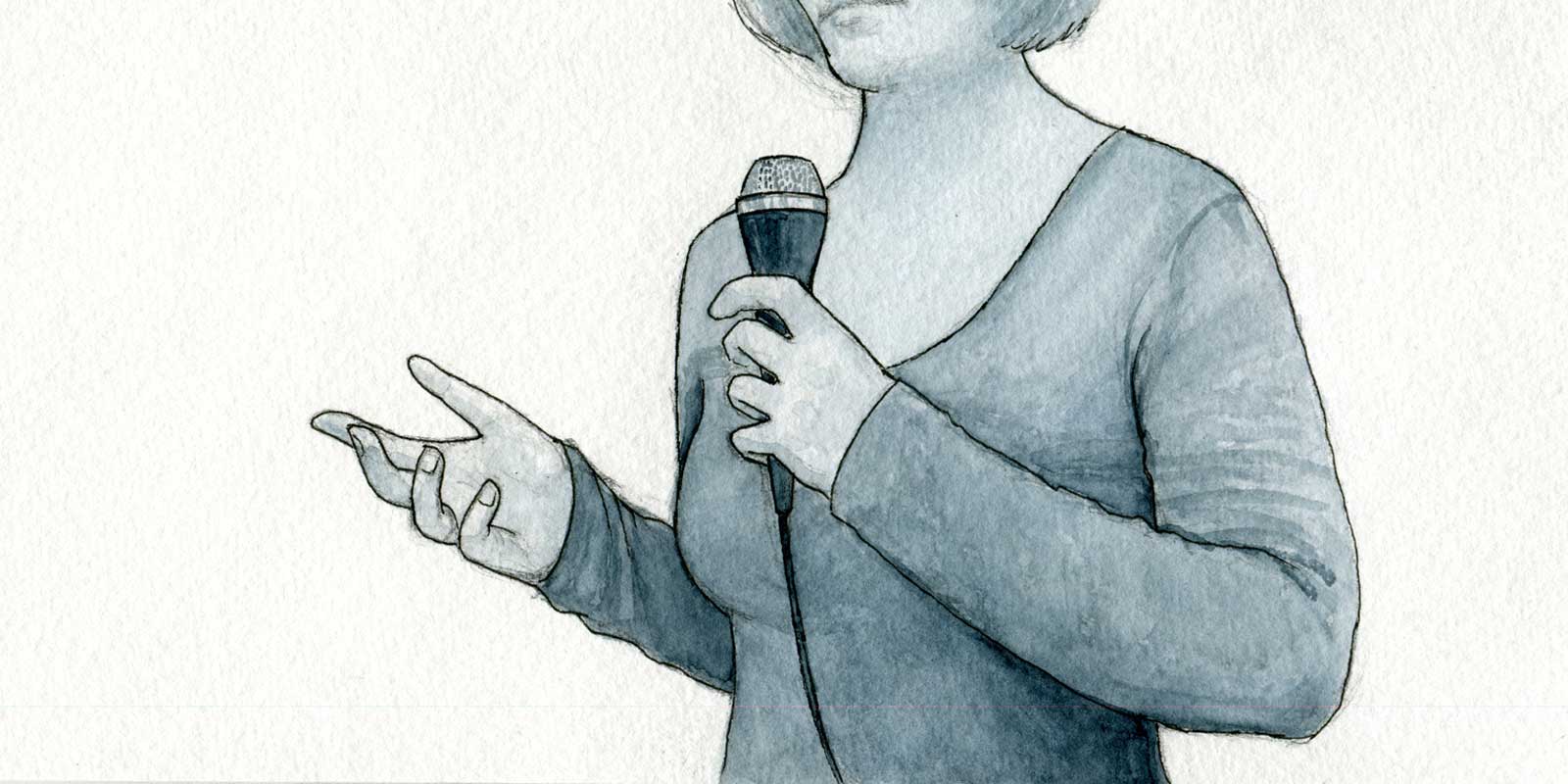Presenting is one of the necessary activities of being a professional. It helps to both shape your thinking and share knowledge. Or rather…this is what the logical part of my brain tells me. I dread public speaking. Despite having a number of positive experiences to draw from, it still drains me to do it.
I’ve taken college and company-sponsored speaking classes, and while those have been helpful, I find myself drawing from a different source when I need the focus and the nerves to present. The most effective techniques for me were the ones I learned from a singing class.
Find the core of the material
Once the material is gathered, the first step is a test run (or three) of the entire thing to get a sense of the overall structure. To remember the cadence of particular sections, I’d try out alternate tempos – faster, slower, or even spoken word – until I got a sense of the beats.
Along the way I’d notice where there were weak points or difficult transitions. I’d repeat the tough parts until I found a way to smooth them out. With songs, this meant varying breathing, enunciation, or tone. With presentations, this meant trying out different words or concepts to help me lead into the next concept, or reinforce a point. If I could find a way that worked, I could repeat it until that particular transition felt natural and easy to recall.
Once I’d memorized enough, I’d try it in front of a classmate. That is a particularly vulnerable time in the process, but at the same time, there’s really not much to lose. That makes it the best time to spot issues to correct, and feel good about knowing where the strongest parts lie.
Warming up
There’s a purely physical aspects to readiness as well. In my singing class, we learned a series of simple musical phrases to sing, from low to high, to practice the full range of our voices. One of the speaking classes I took recently achieved something similar by having us present short classic speeches at full volume with as much energy as we could muster. If you warm up by “chewing the scenery”, that energy carries over.
The other preparation tip (that I’ve occasionally ignored, at my own peril) is to avoid drinking coffee, tea, or anything with caffeine beforehand. I find I have plenty of energy from the adrenaline alone, so the only thing caffeine does is make me jumpy and speak faster.
Making it through
When it’s time to go on, that’s it – there’s nothing else to do but just do it. Regardless of how I’m feeling, I clear my mind of everything except the start of what I’m about to do, and focus all of my energy on breathing and relaxing.
That’s not always enough to counter jitters, and when they happen, they’re pretty distracting. When I hear my voice quivering or faltering, I’ll breath and keep going with a little more power until it sorts itself out. When I find myself pacing or gesturing too much, I make myself slow down. Sometimes I’m genuinely shaking. If that’s happening, the best thing I can do is stand still and visualize the nervous energy channeling down out of me and into the ground, almost like a lightning rod. I actually feel a difference, and that’s usually enough to settle down.
I also remind myself that I’m paying much more attention to those small cues than the audience is. They may not even notice if I don’t call attention to it. I try to focus on the opportunity instead, thinking about what I can do while being granted that space and attention.
Afterward, instead of focusing on how it went, try to just listen. It’s easy to get wrapped up in self-critique, so give yourself a little time before deconstructing it. My singing teacher would talk about how to accept feedback graciously, and even when she didn’t feel great about how it went, she would accept positive feedback with a simple phrase: “I’m glad you enjoyed it.” If you have the opportunity to solicit constructive feedback, do so…later. For now, just give yourself a break. You’ve earned it.
Presentations are a bit longer than a song, but the stage fright is similar to me. Both take a combination of preparation, improvisation, and focus. I look for these ways to become absorbed into the material itself, and shift my frame of mind as best I can to the present and the privilege of having the opportunity to share it.


Leave a Reply